A piece from the raffia collection by designer EJ Relampagos. Photo by Excel Panlaque
In Bohol, local fashion designers are tapping into new opportunities from traditional saguran weaving.
It’s late afternoon in the bright, open-air space of the Tubigon Raffia Gallery in Bohol. There’s chatter around as guests gather by their in-house cafe, but you can easily isolate the long whirring snips coming from the raffia weavers, who are perched on stools or standing by posts where freshly bleached raffia palm leaves hang.
They grasp the middle of a raw-edged, curved blade, slicing through long strands of the leaves to prune off the edges until they are wispy and almost diaphanous, glinting as they wave in the wind. This is the first step in the process of the Boholano tradition of saguran or raffia weaving, upheld mostly because of the job security the industry offers. In the Tubigon Loomweavers Cooperative, the oldest weaver had just turned 60, supporting her family as their matriarch for the past three decades. Saguran weaving has always presented a source of stable income primarily for women in the province, but as the National Museum of the Philippines – Bohol recently investigated, for men alike.
“We call it ‘Gasa sa raffia’ because it’s a gift,” says Tubigon Raffia Gallery operational manager Gertrude Abarquez. “It’s a gift that if you’re industrious, you’re hardworking, you’ll survive. And some of [the weavers here], their kids are already in college.”

The business blooms via floormats, placemats, hats, and practical baskets and bags, but there are the intricately done furniture and art pieces that also hold promise: raw-edged raffia that snake along walls or hang from ceilings in curvilinear forms. With sturdy, durable fiber, the options present themselves. Though it’s been done before, what’s mostly untapped is fashion. But even that avenue doesn’t feel too closed off.
“In the creative industry kasi, with research, with innovation, a lot of things can be possible,” Bohol’s provincial administrator Asteria Caberte tells Vogue Philippines, speaking on how she sees the raffia industry furthering. “But the buyers themselves, they have their own innovation efforts.” For now, furniture finishings and accessories around the home are what keep saguran weaving afloat, but there may be progress yet once consumers’ interests are piqued in fashion and beyond.
“Because [buyers] have a different projection on where to bring raffia in the future, sila mismo ang gumagawa ng research and innovation [Because they have a different projection on where to bring raffia in the future, they are the ones taking on the research and innovation],” Caberte continues. “[For me], it’s more on the softening [of the fabric]. So I see a very bright future for raffia as an industry.”

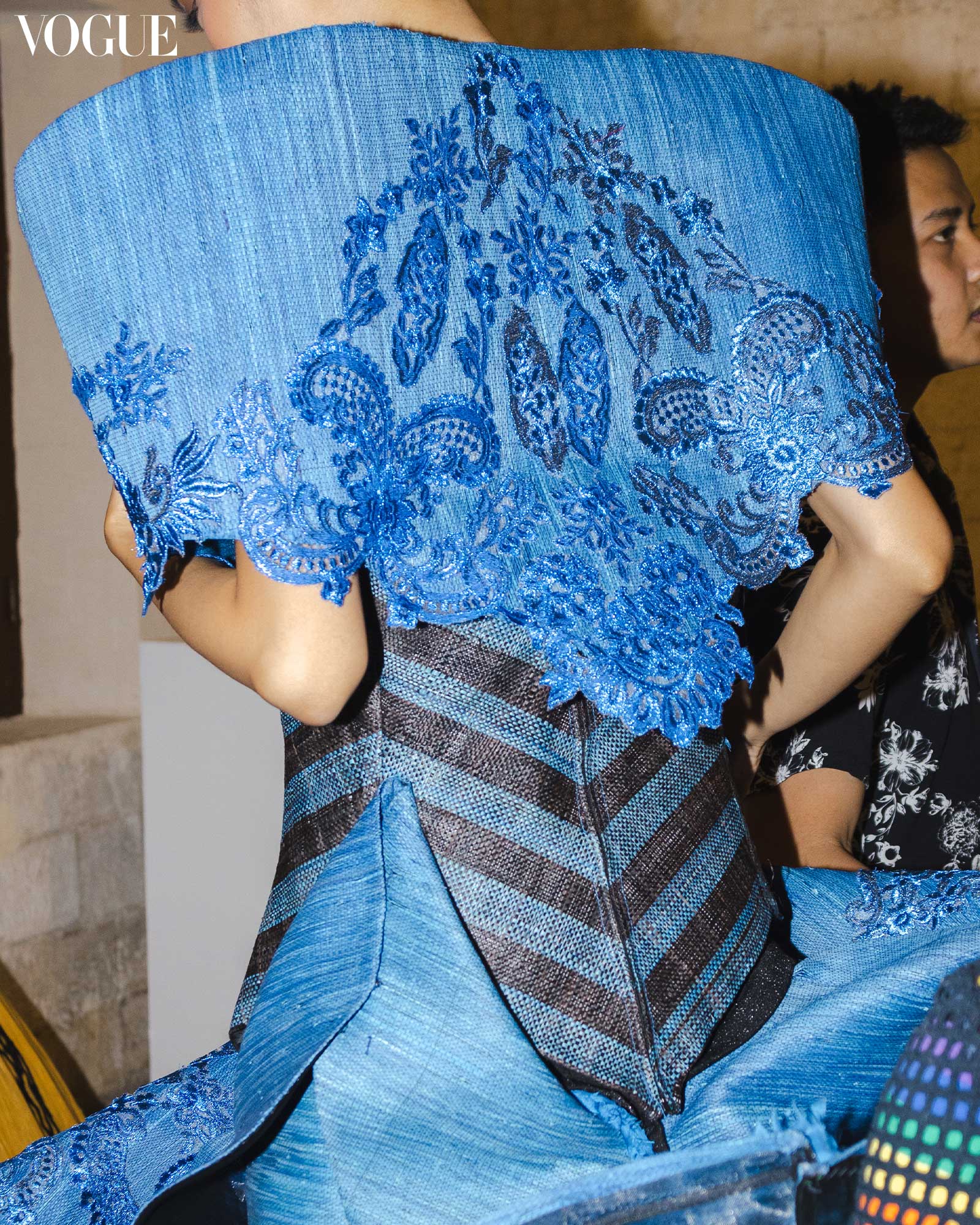
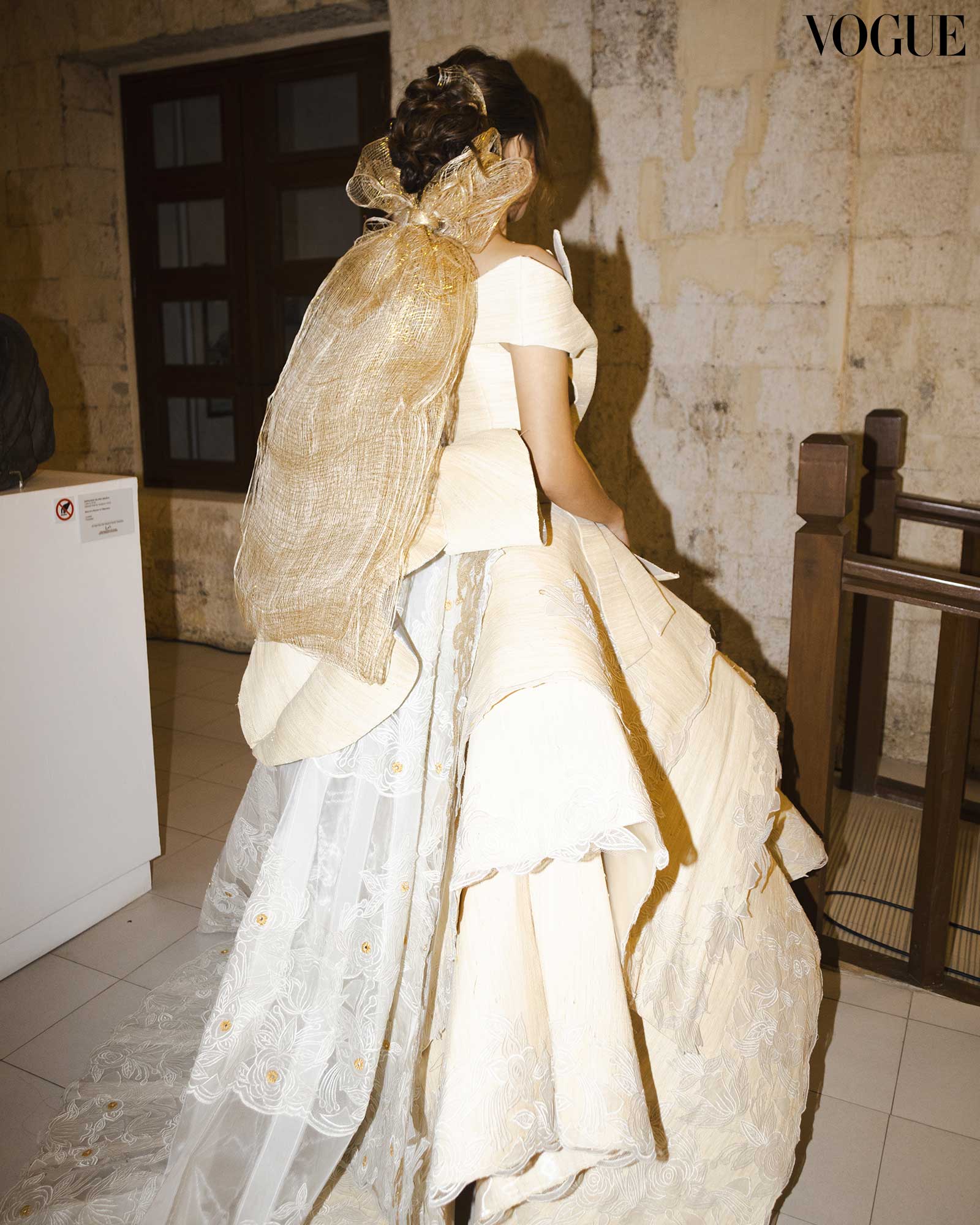
In a fashion show staged at the National Museum of the Philippines – Bohol, the textile took on flounced forms twisted and molded to the body, inspired by Filipiniana and contemporary silhouettes alike. Designers Christian Bustrillos, Christian Relator, EJ Relampagos, Noel Estopito Couture’s Noel Bombat Estopito and Christian Kent Panglinawan, and Fashion Institute of the Philippines CEO Shanon Pamaong present what is possible now, even if raffia as a clothing textile still lies in early stages of development. Within the collections, there is inspiration striking in terms of creativity, but also of functionality. Pamaong tells Vogue that he sees his pieces being worn separately; his kimona can even be paired with jeans for a casual day out, he laughs.
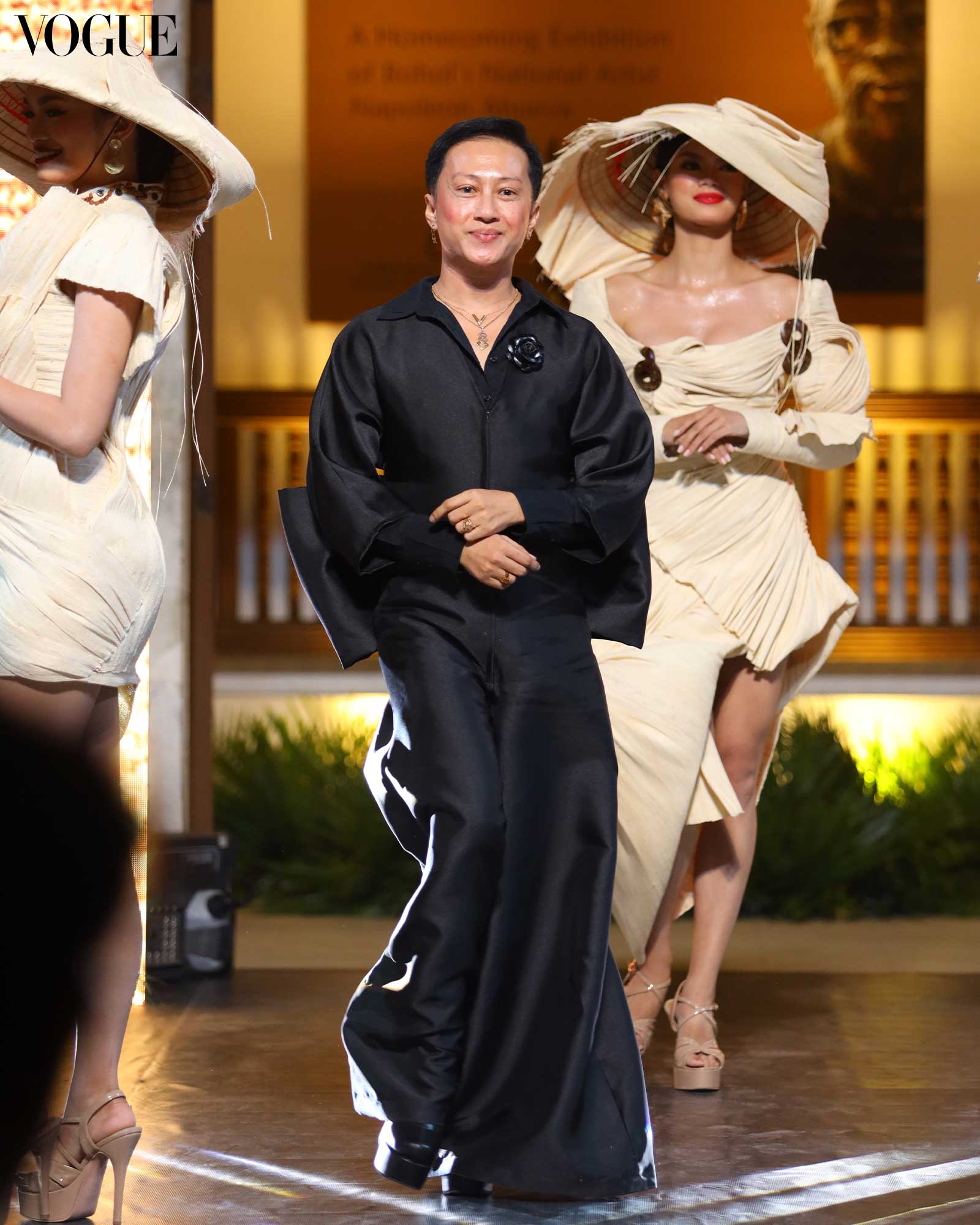
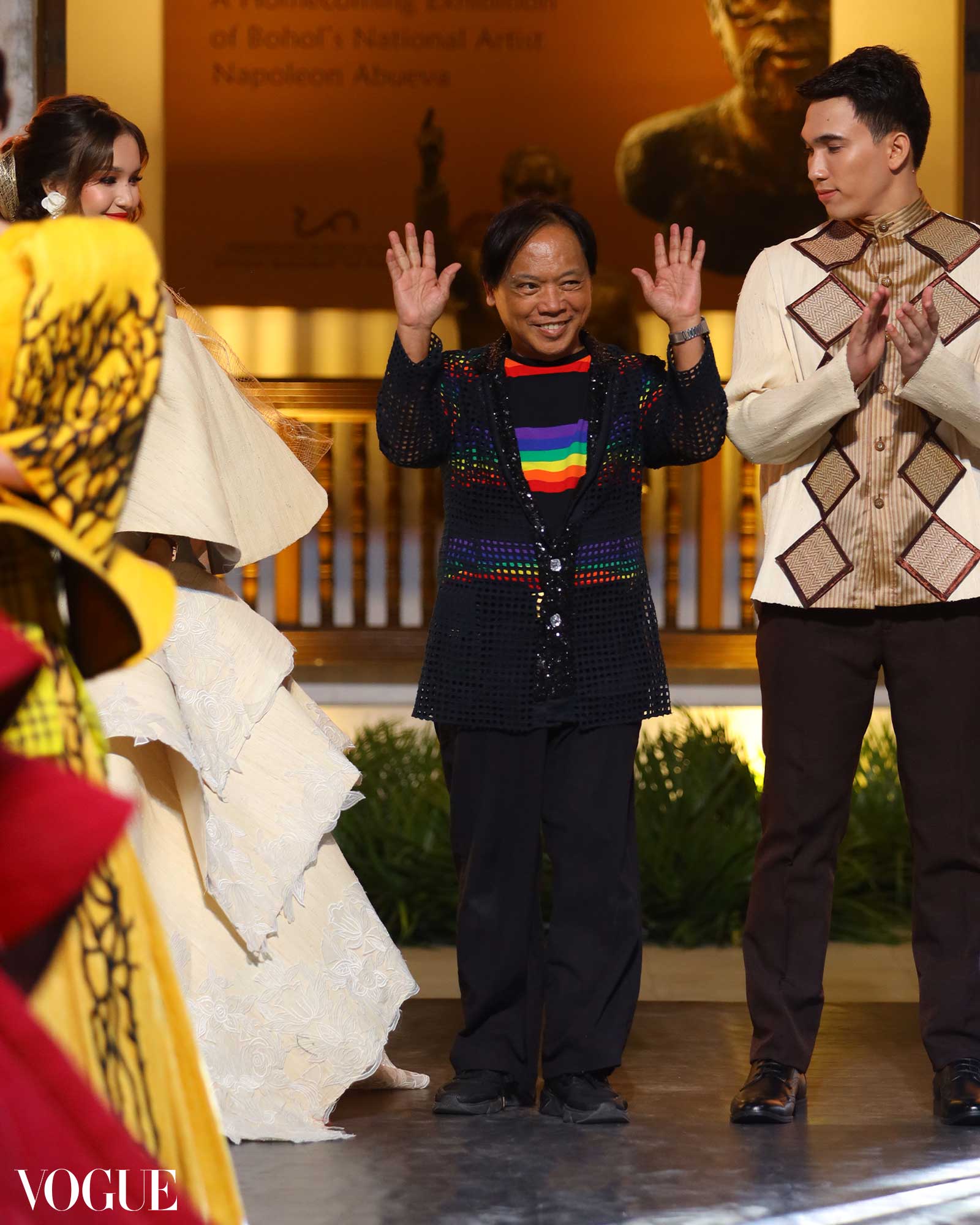
There are new opportunities in this space they’ve created: options of ways-to-wear, formalwear that is easy to store and clean, and garments that, however stiff, are wearable and practical. “We are innovating,” Pamaong said post-show. “You can make something out of what is existing already to give raffia more usage. That’s the challenge, and I think we succeeded.”
Christian Bustrillos
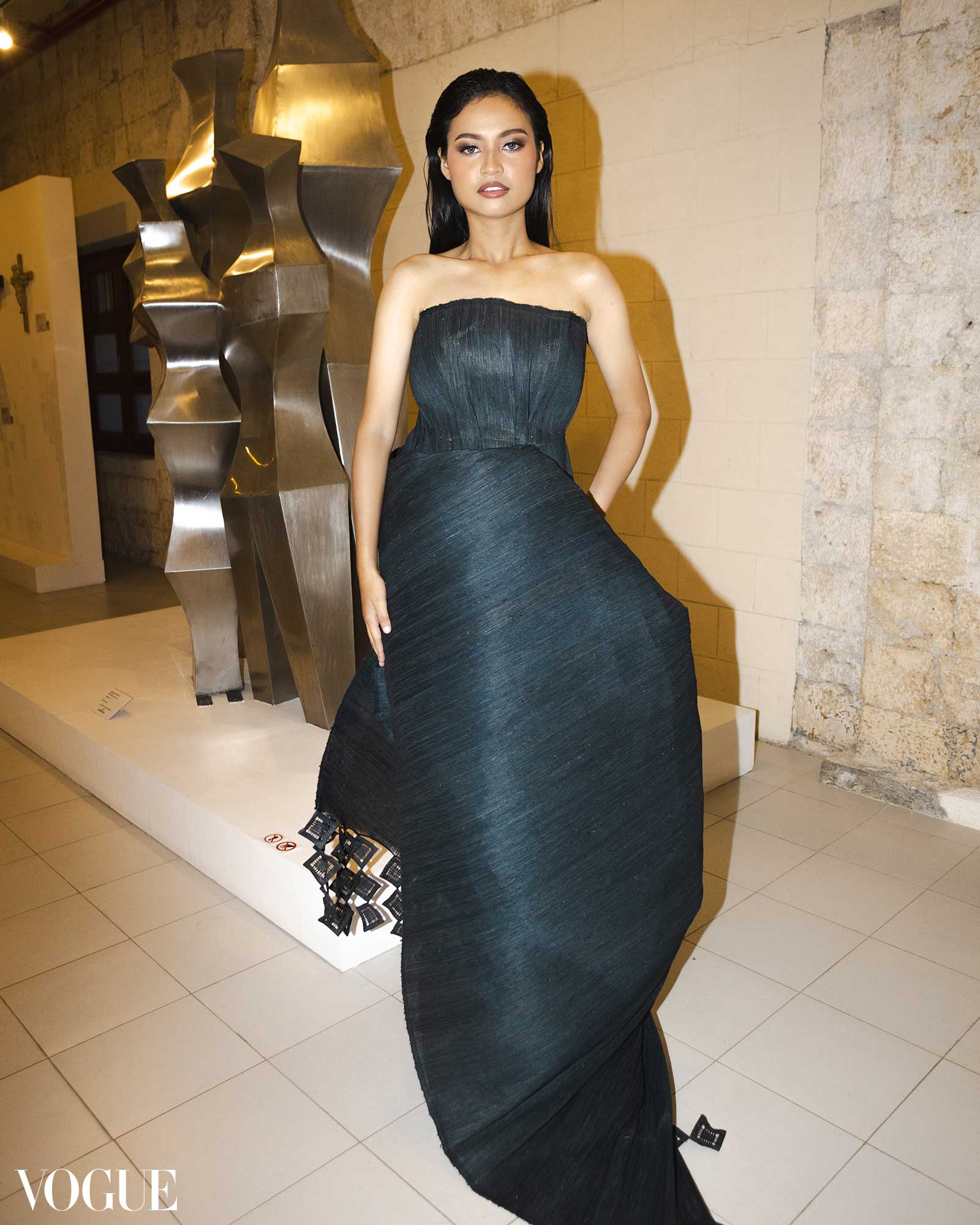
For his collection, Christian Bustrillos pieced squares with gilded details together into halters and v-necklines, falling over his draped skirts. “I’m interested in making draping look sculptural,” he says. It was his first time working with raffia, but the challenge allowed his creativity to flow.
“It’s fulfilling that we’ve made something out of it,” he tells Vogue Philippines. “It’s just a success for both the loom weavers in Bohol and for us designers to showcase our talent with an original fabric Bohol has to offer.”
Christian Relator
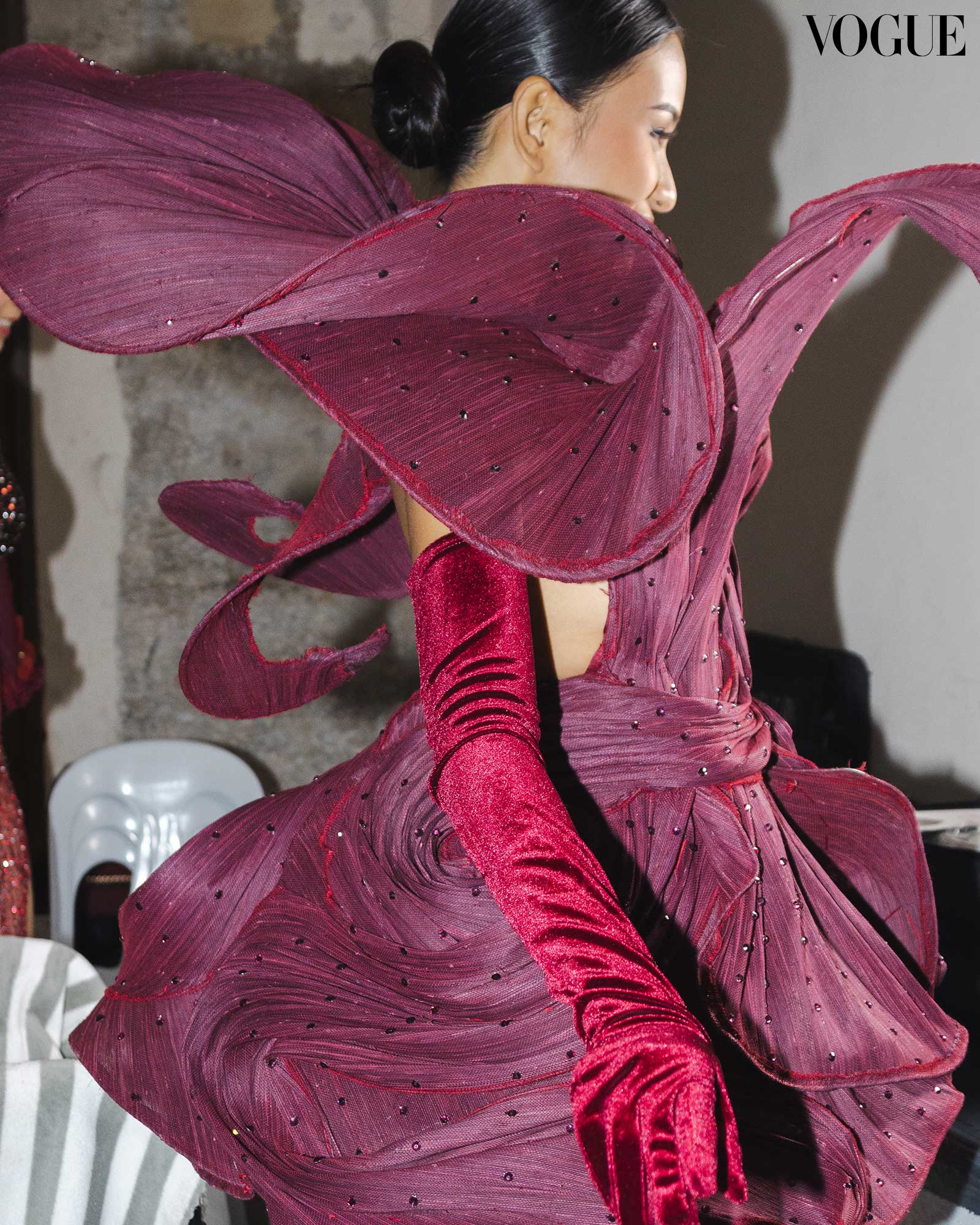
Christian Relator’s first thoughts of going into fashion began simply, he tells Vogue. He recalls moments of his childhood, when ideas started to swirl around in his mind. “When I was in elementary-high school, I was the artist of the classroom; mostly my art pieces were all about flowers, all about anything colorful.”
His collection Grande Flora taps into those happy memories. Just as its name implies, the pieces feature supersized blooms twisting over and across the form, lightly encrusted with gems.
Noel Estopito
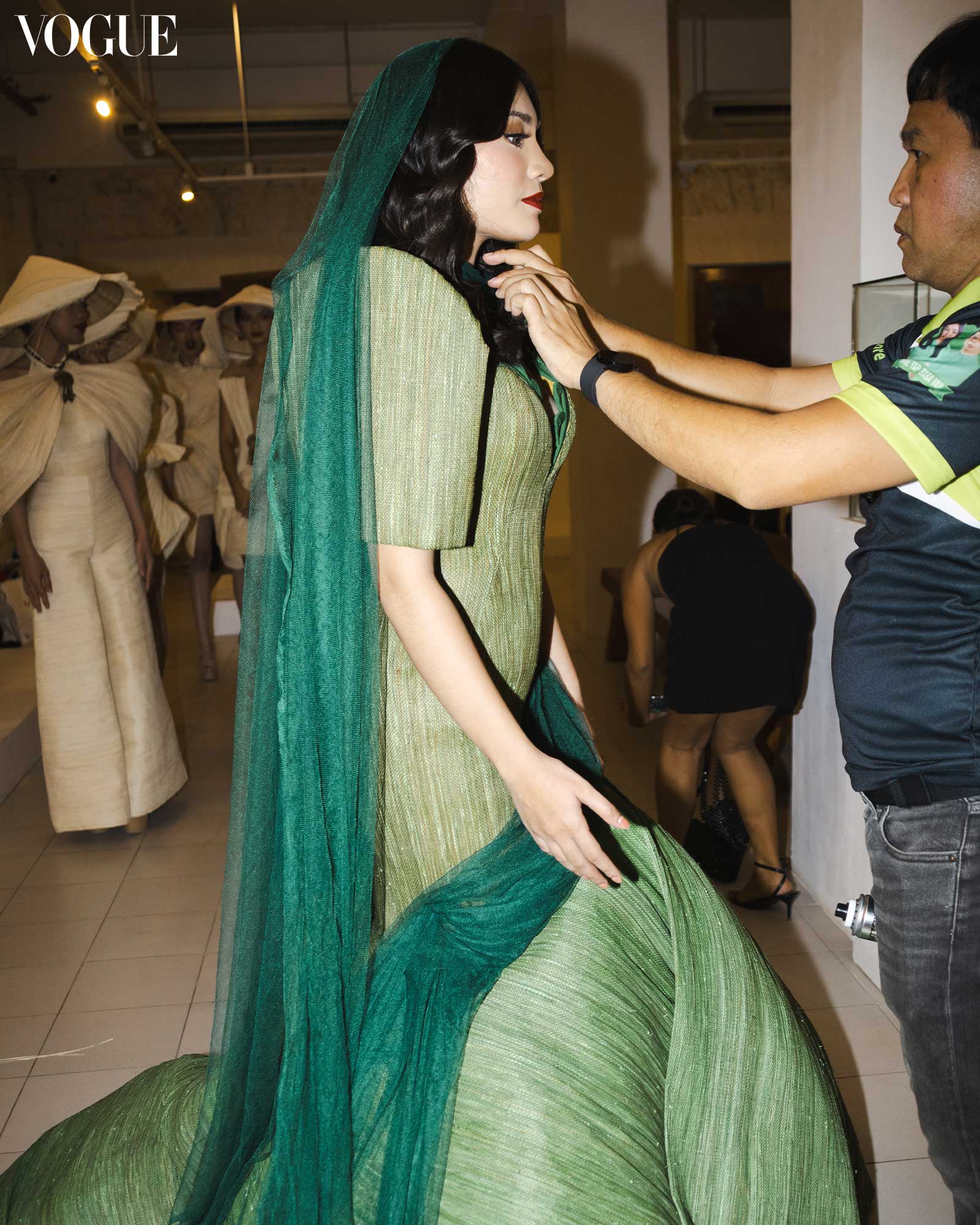
Noel Estopito Couture’s Noel Estopito and Christian Panglinawan presented searing saturation for their collection. Bright canary yellows walked alongside neon greens. The designer duo preferred a more contemporary approach but still kept a touch of the traditional; there were cage dresses and tailored men’s jackets, while their finale look was a traditional terno affixed with asymmetrical detail.
EJ Relampagos

“I remember, when I was very young, I used to make paper dolls out of folders and bond paper,” EJ Relampagos muses. “[Sheets of] bond paper became paper doll dresses. And from then on, I thought to myself, I want to be a dressmaker someday.”
For EJ, there is a thread of connectivity between then and now. He tells Vogue that working with raffia was a challenge (delicate fibers easily tangle), but he achieved a sense of fulfillment in using fashion as a medium to tell stories about the land. “Bohol is actually a karst landscape,” he explains. “You can see my collection depicts the winding rivers, the magical hills, the mystical caves. You will see Chocolate Hills.” He laughs, saying that when all of his models stand together, they’re meant to appear like an “abstract representation” of Bohol.
Shanon Pamaong
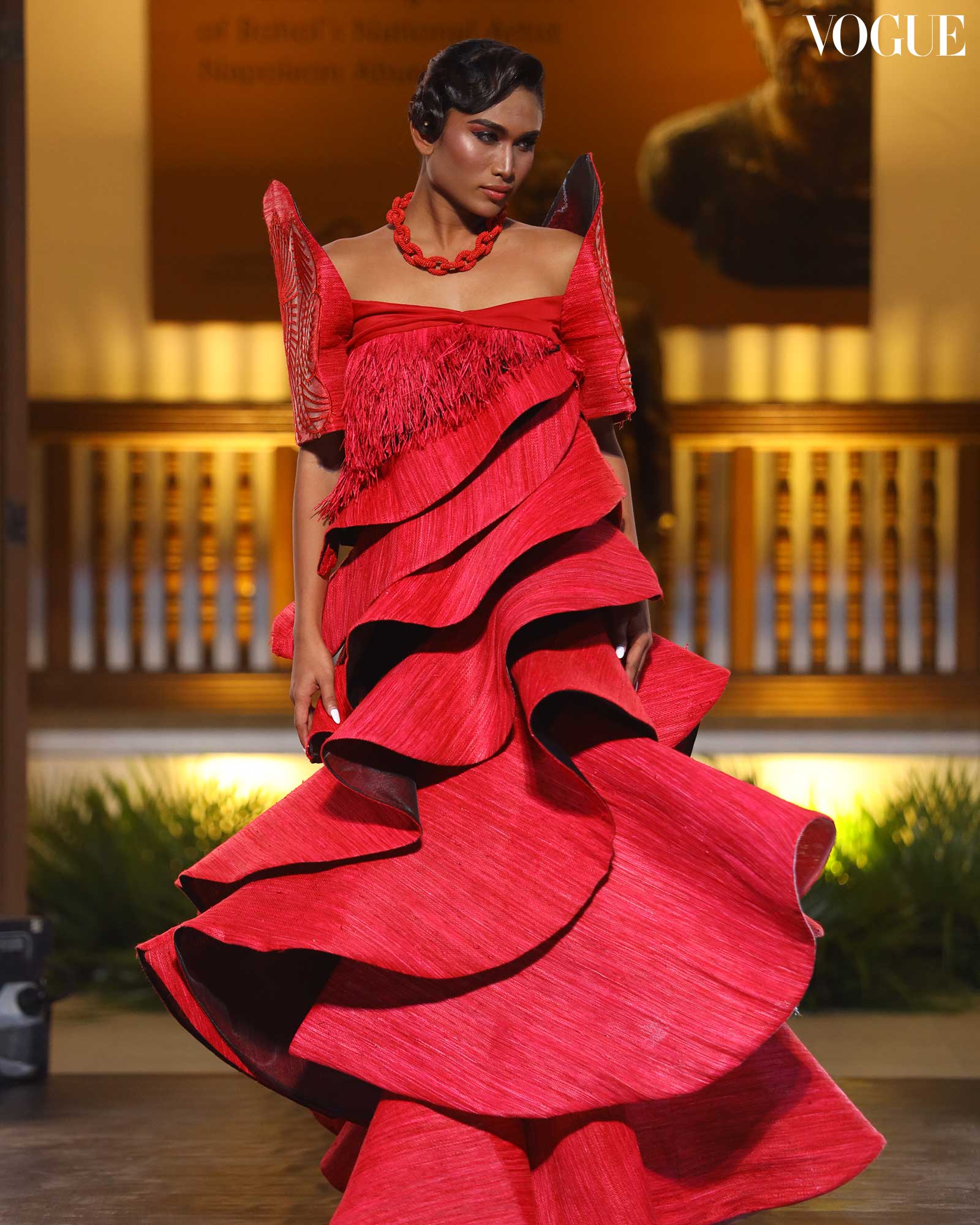
Fashion Institute of the Philippines CEO and veteran designer Shanon Pamaong thought the challenge raffia posed worked in his favor. “I go for 3D effect on the garment, you know,” he smiles, talking to Vogue about his signature post-show. “And this was the best fabric to work on it because of the stiffness.”
His collection—which featured the red, white, blue, and yellow of the Philippine flag in different iterations of the Filipiniana to represent the three main islands—featured bustling skirts layered and draped to blown-out proportions. But each gown was made to be modular: detachable pieces that can be worn over inner garments and easily stored away. Challenge or not, the future of raffia in fashion, now, seems just within reach.
Special thanks to the National Museum of the Philippines – Bohol, Go Panglao Tours and Travel, and The Bellevue Resort Bohol.
